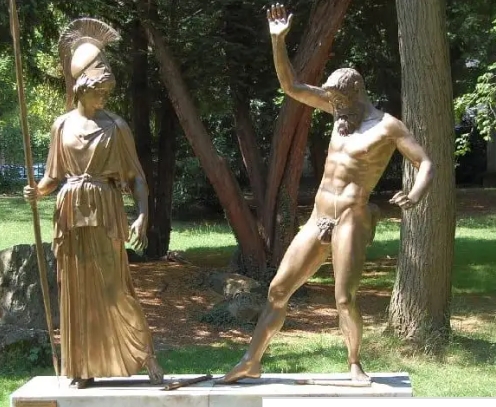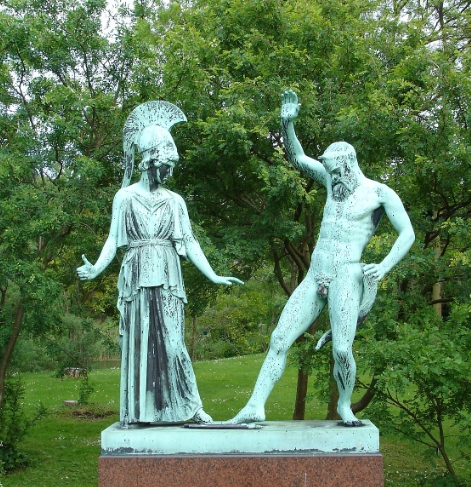The story of Athena and Marcius is a classic symbol of wisdom and music, pride and humility in ancient Greek mythology. Legend has it that Athena once created the double-pipe flute (Aulos), but she eventually gave up the instrument because her face was distorted when she played it. Later, the forest elf Marcius picked up the instrument and proudly showed off his excellent playing skills to the gods. Marcius even dared to challenge the sun god Apollo, but was eventually punished for his arrogance.
In works of art, the images of Athena and Marcius have been depicted many times, especially in sculptures and paintings. As a symbol of wisdom and war, Athena’s image is usually dressed in armor, holding a spear or shield, showing unshakable power. Marcius, on the other hand, appears as a blown instrument, showing his confidence in his musical skills. Many artists have explored the complex relationship between wisdom and pride through the depiction of this myth.
Among the many statues depicting Athena, Greek goddess statues show Athena’s solemnity and majesty. Her image not only symbolizes strength and wisdom, but also conveys the ancient Greeks’ reverence for reason and order. In the story of Athena and Marcius, artists conveyed the profound meaning behind the myth through statues, reminding people of the price of pride and the wisdom of humility.




